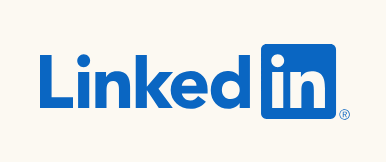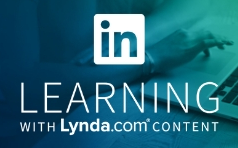- First, you need to create and maintain your LinkedIn profile. If you want recruiters to click on your profile, you'll want to load a profile picture. LinkedIn has tips for selecting the right picture.
- Compose a headline that focuses on your career and industry interests. For example, "Mechanical Engineering Student - Formula SAE Team Member - Alternative Fule Researcher"
- Write a summary for your About section that tells recruiters a little bit about youreslf, what kind of opportunities you're seeking, and what skills and experience you bring to the table. See examples on pages 2 and 3 in the LinkedIn Tips for Students handout.
- LinkedIn has sections for your professional work experience, organizational involvement, education, volunteer work, skills, awards, courses, and projects. Add smaples of your work by uploading photos, presentations, videos, and web pages.
- You can indicate to employers that you are job searching by using the Open to Work frame for your profile photo – just click on the photo and select Frames to select either “Open to Work”
- Create a custom LinkedIn URL with your name (Displays nicely on a resume).
LinkedIn Resources for the Job Search
CAREER SERVICES HOME- Reach out to your family, friends, classmates, professors, and former supervisors.
- Connect with UMD Alumni (view a short YouTube video for specific tips).
- Connections can "endorse" you for skills you've listed and others they think you have. For example, a project team member might endorse your technical writing or presentation skills.
- Request recommendations from connections you know well. Ask managers, professors, or classmates who've worked closely with you to write a recommendation. This gives extra credibility to your strengths and skills.
- Join LinkedIn groups of interest, and follow companies as well as industry leaders in your field.
- Beware the “easy” connection tools. When you want to connect with someone, go to their profile before you click Connect, so you can send a short personalized message. See page 4 of the LinkedIn Tips for Students handout. Clicking Connect from a suggested contact list will spam the person with a generic message that they are less likely to respond to.
- Focus on the 1st & 2nd degrees. Your friends and roommates today will be your colleagues and clients tomorrow. You can also use the alumni search to identify potential contacts.
- Ask for advice. Use LinkedIn to set up informational interviews with alumni or other acquaintances that are not on Terrapins Connect. You can ask about your contact’s career path, or about useful skills and activities. Refrain from asking your recent acquaintances for a job. Send a thank you note after your conversation.
You can upload images, files, and hyperlinks to your Linkedin profile in the experience and education sections. This feature allows you to illustrate your engineering skills through samples. Demonstrate your abilities instead of just writing about them. Check out the article below to learn how to add examples of your work to your profile.


LinkedIn Learning provides free online courses in a variety of technical and behavioral skills that can enhance your resume and round out your skillset. It is free for all University of Maryland students when you log in with your @umd.edu email address (your @terpmail account will not work).
Find information on how to set up a LinkedIn profile and tips for making professional connections through the platform on our Job Search Handouts page, under the Networking & the Hidden Job Market tab.
-
Successful Job Hunting, includes:
-
Job Hunting for College Grads
-
Creating a Career Plan
-
Turning an Internship into a Job
-
Writing a Resume
-
Job Search Strategies
-
Learning LinkedIn
-
Mastering Common Interview Questions
-
Giving Your Elevator Pitch
-
Negotiating Your Job Offer
-
LinkedIn Learning, provides free online courses in a variety of technical and behavioral skills that can enhance your resume and round out your skillset. It is free for all University of Maryland students when you log in with your @umd.edu address. (Logging in with your @terpmail account will not work.) If you connect your LinkedIn account to LinkedIn Learning (through your settings), then you can add a badge to your LinkedIn account to prove that you finished it.
When should I use LinkedIn Learning?
LinkedIn Learning is a great tool to use over your breaks to continue developing and practicing technical skills. If you are interested in jobs that seek a technical skill that you need, you can use LinkedIn Learning at any point to develop that skill so you can add it to your resume. If you have an interview coming up, there are a variety of courses directed toward practicing technical and behavioral interview skills.
What LinkedIn Learning courses should I take?
Below, we have a list of recommended courses for different engineering majors. Of course, you know yourself best and can take whatever classes suit your needs.
Aerospace Engineering
- Autodesk Nastran in-CAD (used for FEA in aerospace industries)
- Learning Catia
- Learning Siemens NX
Bioengineering
- 3D Animating the Hidden World of Human Anatomy (used for molecular animation using Protein Data Bank in research projects)
- MATLAB Essential Training
Chemical & Biomolecular Engineering
Civil Engineering
- Practical Engineering (used for real world fundamental civil concepts)
- Become a Civil Engineering CAD Technician (a learning path including CAD software such as Autodesk Civil 3D and Infraworks for infrastructure and urban planning)
- Construction Management: Concrete Construction
- Construction Management: Reading Drawings & Specifications
- Six Sigma Foundations
- AutoCAD Civil 3D
- MicroStation 3D Essential Training
- ArcGIS Essential Training
- Primavera P6
- Lumion
- Sketchup 2019 Essential Training
- Learning Bluebeam
- LEED Certification
Computer Science and Engineering
- Computer Science Principles (intro to principles of programming for non-Computer Science majors)
- Programming Languages Principles
- Nail Your C++ Interview
- Nail Your Java Interview
- Nail Your Python Interview
- Nail Your Cybersecurity Interview
Electrical Engineering
- Learning Arduino: Foundations
- Learning Arduino: Interfacing with Hardware
- Learning PLC Ladder Logic
- Raspberry Pi Weekly
- Electronics Foundations: Semiconductor Devices
Environmental Engineering
Fire Protection Engineering
Materials Science and Engineering
- Introduction to Composite Manufacturing
- Design Foundations: Prototyping and Manufacturing
- Learning Houdini
Mechanical Engineering
Additional Topics
- Data Analysis
- Machine Learning
- Web Development
- Excel Essential Training
- Project Management Software
- Rendering
- 3D Modeling
- Product & Industrial Design
- Any other Certification Preparation programs
Top